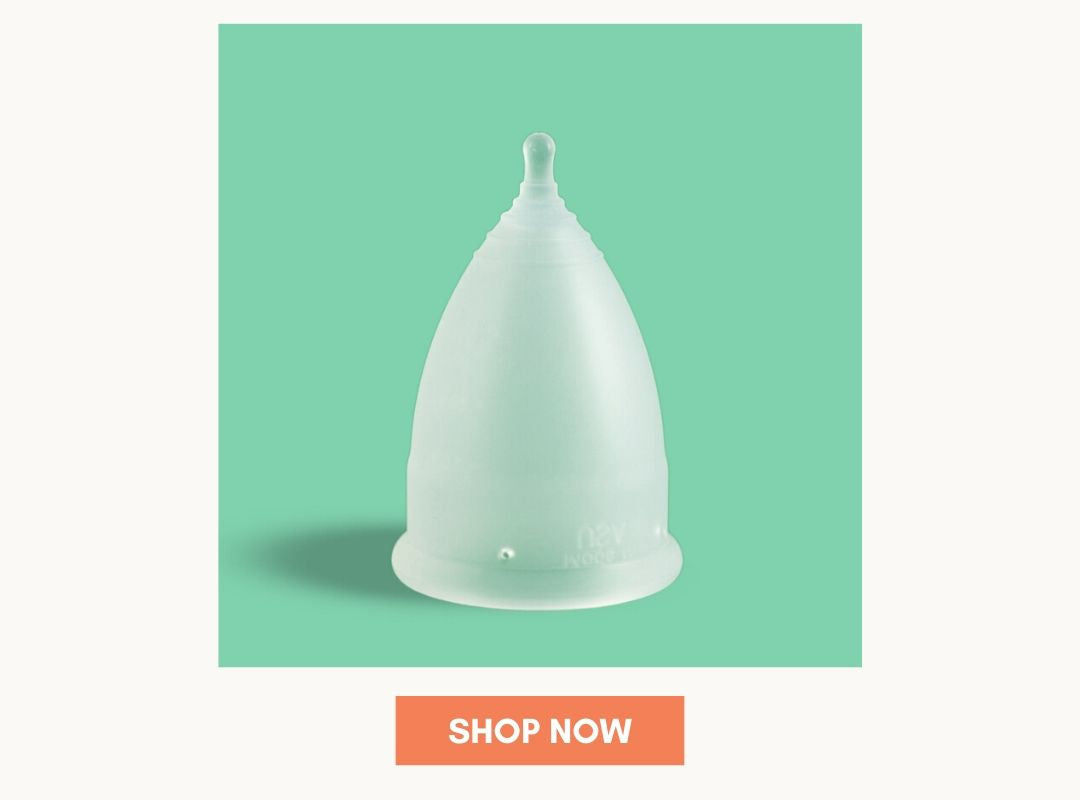Organic tampons are thought to be a more eco-friendly and healthier alternative to the products you usually see in drug-stores. But what exactly are organic cotton tampons and how do they differ from conventional products?
Despite the soaring popularity of these products, there is no official definition or research on the differences between natural and conventional feminine products. Furthermore, organic tampons still share many of the same health and environmental downsides as conventional alternatives. Here's what choosing feminine products branded as "natural" means -- and what it doesn't.
Disclaimer: The following was written for informational purposes and is not medical advice.
What Are Organic Tampons?
In the United States (everywhere except New York), feminine product manufacturers do not have to disclose their products' ingredients. But today, there is a big push for educated consumption; In other words, women are looking to learn more about what's in their products, especially when it comes to feminine hygiene.
Organic tampons are defined as products that contain organic cotton and use peroxide, rather than chlorine, for bleach (hint: Your tampons are not naturally that white color). The companies that produce these feminine products often claim that their more natural alternatives do not pose the same health risks as conventional products.
Why Use Organic Tampons?
Though there is a dearth of research surrounding feminine products, more and more women are moving away from conventional cotton and bleach -- both of which may have health risks.
Cotton Farming Involves a Lot of Pesticides
Specifically, cotton is one of the most pesticide-intensive crops on our planet. According to the National Wildlife Foundation, the United States has used over 84 million pounds of pesticides on domestic cotton crops since 2000. Many of these chemicals are labeled carcinogenic to humans by the Environmental Protection Agency.
Most feminine products are made from cotton. Though this is thought of as a natural ingredient, the prevalence of pesticides and insecticides in its farming is of increasing concern to women -- especially considering that the vaginal canal is one of the most absorbent part of a woman's body.
Conventional feminine products may contain traces of these pesticides. In theory, organic cotton tampons do not.
Why Do Some Prefer Organic Tampon Dyes to Chlorine?
Conventional products are also typically dyed with chlorine to produce that bright white color. Chlorine may produce Dioxin, which is a potentially cancer-causing and hormone-disrupting carcinogen.
By contrast, organic tampons may be dyed with peroxide. It is not thought to pose the same health risks.
Do Organic Cotton Contain Plastic?
Though feminine product manufacturers are not legally required to disclose all the materials in their products, many of the bigger brands include a lot more than cotton in their pads and other feminine care items.
In addition to non-organic cotton, conventional products may include rayon and other chemicals and plastics designed to make them more absorbent. This is why it may take up to 400 years for conventional feminine products to decompose.
Organic tampons market that they do not contain plastics -- though many in the United States come with single-use plastic applicators, which take centuries to decompose. Though the product may be healthier for you, that doesn't mean that it's more sustainable.
Why Is Non-Perfumed Important?
It is not a good idea to put anything scented in your vaginal canal. This means that perfumed feminine products are not a good idea. Organic tampons are typically fragrance-free, especially when those fragrances are synthetic.
These may cause irritation of the vagina or vulva.
Are They More Expensive?
Yes. Only 0.1% of the world's cotton is organic for a reason: Farming without pesticides is more difficult. It typically means lower yields, the threat of pests, and adherence to more costly environmentally-friendly practices such as sustainable soil management.
As women menstruate for 30+ years, buying the best organic cotton tampons comes with a price tag. By contrast, a menstrual cup lasts for 10+ years and costs what 2 months of disposable products would.
Are They Actually Better for You?
The big question on a lot of women's minds is whether these highly-publicized products are actually better for you. To date, no research has been done to compare the health effects of conventional vs. organic tampons.
Some brands claim that their organic tampons lower the risk of Toxic Shock Syndrome (TSS), but there is no research to suggest that that's true.
Additionally, some brands stress that their applicators are free of phthalates, chemicals that can be found in plastic. However, according to the National Institute of Health, these are only a problem if you're heating plastic, in an oven, for example.
Can They Disrupt Vaginal pH and Cause Chafing and Dryness?
Conventional and organic tampons may still cause discomfort and pose health risks. These include:
- Vaginal Dryness: One study found that tampons caused vaginal dryness in 89% of cases, in varying forms of severity. Another study that considered the correlation between feminine product absorbency and dryness, tampons may cause dryness in women already experiencing hormonal changes, such as those associated with menopause.
- Increasing Vaginal pH: Since conventional and organic tampons hold menstrual fluid within the body, they may contribute to elevated vaginal pH levels. This phenomenon is so well known that a company released vaginal pH balancing feminine products (which had zero effect compared to conventional products, according to research).
- Chafing, discomfort and microulcerations: Studies on tampon use can cause microulcerations, meaning that they can produce a porous effect in the vaginal walls in some cases, according to a study published in the European Journal of Obstetrics & Gynecology and Reproductive Biology.
Note: We are not doctors. The above information is for educational purposes only. It is not medical advice. If you have any questions or concerns related to organic tampons, please speak with a gynecologist.
Do Organic TamponsHave a High Environmental Impact?
Though the cotton that you insert into your body may not contain hard to decompose plastics and chemicals, many more natural brands still include single-use plastic applicators.
If every menstruator on our planet used tampons, organic or conventional, we would generate 390 billion pounds of waste. Disposable feminine products of any kind do not sole the environmental impact posed by the feminine hygiene industry.
Organic Tampons vs. Menstrual Cups: How Do They Compare?
|
Organic Tampons
|
EverCup
|
|
|
May Cause Dryness
|
Yes
|
No
|
|
May Cause Chafing
|
Yes
|
No
|
|
May Disrupt pH
|
Yes
|
No
|
|
Sustainability
|
No
|
Yes
|
|
Safe Length of Use
|
8 hours
|
12 hours
|
|
Lifespan
|
Single-use
|
10+ Years
|
|
Lifetime Cost
|
$2,520-3,600+
|
$90 (3 cups)
|
Though there is lot of press surrounding natural disposable products, the truth remains: They may not be as good for your health or the planet as menstrual cups.


